Super Robot Wars, known in Japan as Super Robot Taisen, is a series of Japanese tactical role-playing video games produced by Bandai Namco Entertainment, formerly Banpresto. Starting out as a spinoff of the Compati Hero series, the main feature of the franchise is having a story that crosses over several popular mecha anime, manga and video games, allowing characters and mecha from different titles to team up or battle one another. The first game in the franchise was released for the Game Boy on April 20, 1991. Later spawning numerous games that were released on various consoles and handhelds. Due to the nature of crossover games and licensing involved, only a few games have been released outside Japan, and in English; Super Robot Taisen: Original Generation and its sequel were the first of these in 2006. The franchise celebrated its 25th anniversary in 2016, and its 30th anniversary in 2021, and Super Robot Wars 30 was also released overseas.

Robopon Sun, Star and Moon Versions are handheld role-playing video games for Nintendo's Game Boy Color. Of the three games, only Sun was released in North America in December 2000 by Atlus, while their original Japan releases were by Hudson Soft. The games focus on a boy named Cody and his adventures on his island with his robotic friends. They mostly resemble the Pokémon series of video games, but also bear similarities to the Super Nintendo Entertainment System game Robotrek, published by Enix.

Super Robot Wars MX is a video game for the PlayStation 2. It is part of the Super Robot Wars series by Banpresto, and it was released on May 27, 2004. It was later ported to the PlayStation Portable on December 19, 2005, with minor gameplay tweaks, titled Super Robot Wars MX Portable.

SD Gundam Dimension War is a 1995 tactical role-playing video game published for the Virtual Boy in Japan by Bandai. Being the system's only licensed game in Japan, it is part of the SD Gundam series, a spin-off of the larger Gundam franchise by Sotsu and Sunrise. Players control a fleet of robots and vehicles as they set out to rid the galaxy of enemies, with gameplay involving moving robots towards opponents and engaging in combat sequences.
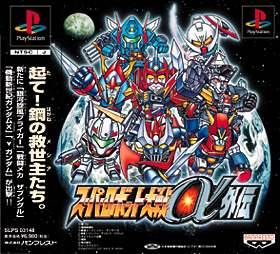
Super Robot Wars Alpha Gaiden, or simply, Alpha Gaiden, is a video game for the PlayStation, first released in Japan in 2001. It is the first side-story in the Super Robot Wars Alpha series, continuing from Super Robot Wars Alpha. The characters of After War Gundam X, Turn A Gundam, and Combat Mecha Xabungle make debut appearances in the game.

Wonder Project J2 is a 1996 life simulation game developed by Givro Corporation and originally published by Enix for the Nintendo 64. It is the sequel to Wonder Project J, which was released in 1994 for the Super Famicom.
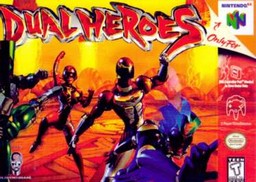
Dual Heroes is a fighting game for Nintendo 64. The game was developed by Produce! and published by Hudson Soft in Japan, Electro Brain in North America and Gaga Interactive Media in Europe.

Super Robot Wars 64 is a tactical role-playing game for the Nintendo 64. It was released only in Japan in 1999. The game can make use of the Nintendo 64's Transfer Pak with the Game Boy Color game Super Robot Wars: Link Battler.

Super Robot Taisen Alpha, known as Super Robot Wars Alpha outside Japan, is a 2000 tactical role-playing video game developed and published by Banpresto for the PlayStation. A version for the Dreamcast, Super Robot Wars for Dreamcast, was released a year later.

Super Robot Wars A is a video game for the Nintendo Game Boy Advance, part of Banpresto's Super Robot Wars franchise and the first to appear on the Game Boy Advance handheld; the letter "A" in the title stands for "Advance". It was ported onto mobile phones as part of the Super Robot Wars i collection in 2006. An enhanced remake of Super Robot Wars A was released for the PlayStation Portable on June 19, 2008 as Super Robot Wars A Portable.
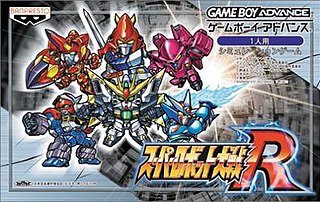
Super Robot Wars R is a video game for the Game Boy Advance and is part of the Super Robot Wars franchise. It is the second game for the handheld system, preceded by Super Robot Wars A. Like its predecessor, it is ported into a mobile cellphone as part of the Super Robot Wars i line.

2nd Super Robot Wars (第2次スーパーロボット大戦) is a tactical role-playing video game developed by Winkysoft and published by Banpresto for the Famicom. It was the first game to be produced in the "Classic" canon timeline, the second game in the overall series, and the first game produced for the Famicom video game system on December 19, 1991.

3rd Super Robot Wars (第3次スーパーロボット大戦) was the third game in a series, the second in the "classic" canon, and the first on the Super Famicom, published on July 23, 1993. Along with 2nd and EX, 3rd Super Robot Wars was released on the Sony PlayStation on June 10, 1999, as part of Super Robot Wars Complete Box and June 22, 1999, as a stand-alone port.

4th Super Robot Wars is a tactical RPG for the Super Famicom developed by both Banpresto and Winky Soft and published by Banpresto. It is the 5th entry in the Super Robot Wars series and the last entry in the Classic Timeline. It was first released on March 17, 1995, and received mostly positive reception, with reviewers highly praising the improvements from the last game while criticizing the game's increased difficulty. The game was ported to the Sony PlayStation and released on January 26, 1996, under the name 4th Super Robot Wars Scramble.

Super Robot Wars UX is a tactical role-playing game for the Nintendo 3DS developed by Banpresto and published by Namco Bandai Games. It is the first Super Robot Wars (SRW) game for the 3DS and was released in Japan on March 14, 2013. The theme of this game is "Possibilities".

Super Robot Wars V is a tactical role-playing game developed by B.B. Studio and published by Bandai Namco Entertainment for the PlayStation 4 and PlayStation Vita. Released as part of Super Robot Wars' 25th anniversary, it is the eighth standalone entry to the series since Super Robot Wars NEO, with the game's continued focus on the massive crossover between different mecha anime series released in Japan. It is released in Asia on February 23, 2017. A Nintendo Switch and Steam ports of the game were released on October 3, 2019.

Super Robot Taisen OG Saga: Endless Frontier Exceed is a crossover role-playing video game developed by Monolith Soft and published by Namco Bandai Games for the Nintendo DS (DS) in 2010. Forming part of the Super Robot Wars series, Endless Frontier Exceed is a sequel to the 2008 DS game Super Robot Taisen OG Saga: Endless Frontier, carrying over its gameplay elements.
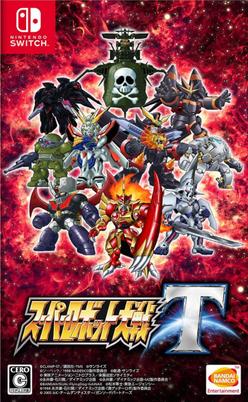
Super Robot Wars T is a tactical role-playing game developed by B.B. Studio and published by Bandai Namco Entertainment. It is the eleventh standalone entry to the Super Robot Wars series and the third installment of the "International Era" series, with the game's continued focus on the massive crossover between different mecha anime series released in Japan. Released for the PlayStation 4 and Nintendo Switch, it was also released in Asia on March 20, 2019.
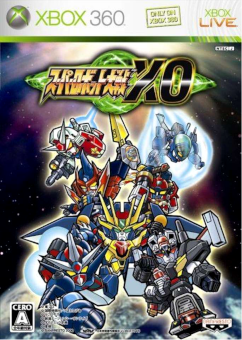
Super Robot Wars XO is a 2006 tactical role-playing video game developed and published by Banpresto for the Xbox 360 in Japan. Part of the company's Super Robot Wars series, it is an updated version of the GameCube installment Super Robot Wars GC (2004). Players control a fleet of mechas from a variety of super robot anime series, including Mobile Suit Gundam and Getter Robo, to defeat opponents on a grid-based map. XO combines tactical role-playing game mechanics with action sequences, which use stylized anime-esque cutscenes unique for each character.



















